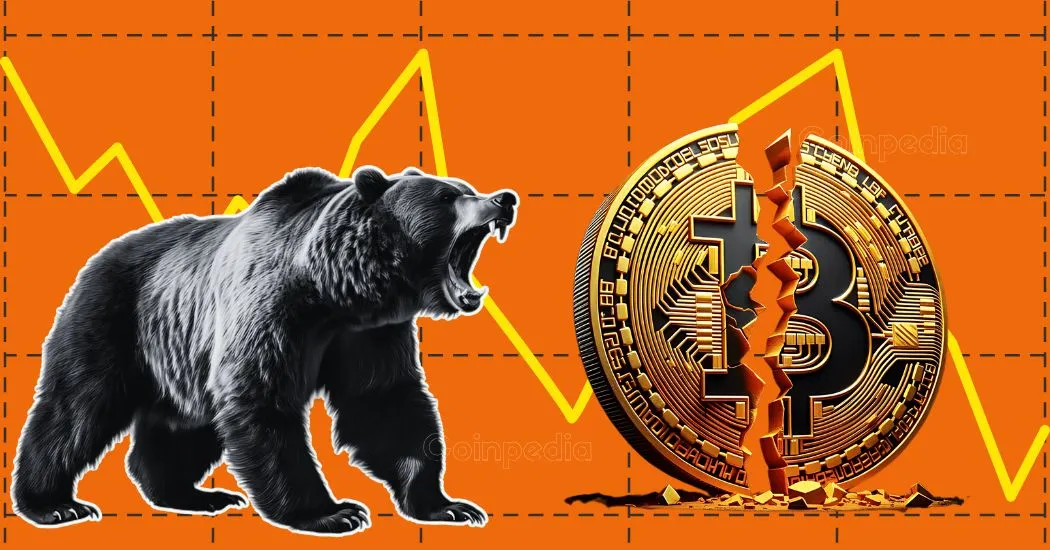The recent downturn in the cryptocurrency market is a multifaceted event marked by widespread sell-offs, heightened volatility, and pronounced panic, largely driven by the behavior of crypto whales—large holders wielding outsized influence. Understanding the dynamics behind this market slump provides insight into crypto’s volatility and how powerful actors shape market sentiment and price movements.
The Whale Effect: Large Holders Trigger Panic Selling
Crypto whales, individual or institutional investors who hold significant chunks of cryptocurrency, exert profound effects on market liquidity and pricing. When whales initiate large-scale sell-offs, the immediate consequence is often a sharp price decline. This rapid downward movement can induce panic among retail investors who perceive the sell-off as a signal of declining asset value, prompting them to sell as well, thereby amplifying price drops in feedback loops.
Several recent reports highlight how whale activity has contributed to the current market downturn. For example, a whale transferring 722,416 LINK tokens worth over $11 million to Binance coincided with a key support breakdown in Chainlink’s price. Similarly, Bitcoin whales selling thousands of tokens on exchanges cause spikes in liquidity that flood the market, pressuring prices downwards. These moves not only depress prices but also create uncertainty about the market’s direction.
Whales sometimes employ specific tactics such as placing large, strategic sell orders to create an illusion of sell pressure—known as bear raids. The goal of these maneuvers is to incite panic selling by retail traders, enabling whales to buy back assets at cheaper prices after the initial drop. This manipulative behavior further exacerbates volatility and undermines market stability.
External Catalysts: Tariffs, Economic Data, and ETF Outflows
Beyond whale behavior, geopolitical and macroeconomic factors have intensified the crypto market’s vulnerability. Notably, recent announcements of tariffs, particularly those linked to sweeping global tariff reforms (e.g., Trump’s tariffs), have unsettled investors across asset classes. Crypto markets, intertwined with global risk sentiment, have not been immune.
The tariff-induced uncertainty has triggered risk-off sentiment, leading large investors, including whales, to reduce exposure to crypto assets to minimize risk. The outcome has been significant sell pressure leading to Bitcoin and Ethereum declines of over 5% and 9% within 24 hours during the height of market unease.
Furthermore, poor U.S. economic data and inflation concerns have weighed heavily on investor confidence. Combined with substantial outflows from Bitcoin Spot ETFs — large-scale withdrawals that reduce market liquidity — these factors have compounded selling pressure. The intersection of these economic triggers and whale sell-offs paints a complex picture of market stress.
Market Panic Amplified by Liquidations and Fear Metrics
This correction phase has also been characterized by widespread liquidations and a climate of extreme fear. When prices drop quickly, leveraged traders face margin calls and liquidations, which force automatic selling and accelerate downward spirals. In one period, crypto liquidations approached $1 billion, magnifying volatility and heightening investor nervousness.
The Fear and Greed Index, a sentiment indicator, plunged to levels lower than during the infamous FTX collapse, signaling unusually high fear. This emotional metric often correlates with retail investors’ rush to sell at perceived bottom levels, further depressing prices. However, historical precedents indicate that such deep market corrections, while painful, often lay foundations for robust rebounds.
Whale Accumulation and Prospects for Recovery
Interestingly, not all whales are exiting the market. Amid the panic, some large holders are accumulating assets quietly at depressed prices, signaling confidence in longer-term value and potential recovery if negative external pressures—such as tariff fears—abate. This accumulation can help stabilize prices once selling pressure subsides and may precede the next bull phase.
Crypto whales’ dual role as both catalysts for volatility and potential stabilizers underscores the nuanced dynamics of these markets. Their influence is critical to monitoring, as shifts in whale behavior often precede major market moves.
Broader Market Implications and Future Outlook
The interplay between whale sell-offs, macroeconomic shocks, and retail investor psychology defines the current crypto market environment. While sell-offs driven by large holders trigger immediate declines, external factors like tariffs and economic data amplify fear and uncertainty. This confluence leads to sharp price falls, liquidations, and panic selling.
Nonetheless, these volatile movements are characteristic of crypto’s immature and speculative nature. The resulting corrections, though painful, provide entry points for long-term investors and create conditions for renewed growth as fear fades and demand stabilizes.
Conclusion: Navigating the Whale-Driven Crypto Storm
The crypto market’s recent downturn is far from a simple sell-off; it represents a complex interaction between powerful whales manipulating supply, external geopolitical and economic stressors, and cascading panic among smaller investors. Understanding how whale sell-offs trigger market-wide reactions reveals the strategic behavior of major players and the vulnerability of less experienced traders to market psychology.
While the current bearish phase challenges confidence, it also highlights the cyclical opportunities inherent in crypto markets. Investors able to decipher whale movements and external triggers can better position themselves to weather volatility and anticipate recovery phases. Ultimately, the “whale effect” is a double-edged sword—capable of causing sharp declines but also paving the way for market stabilization and potential rebounds.




